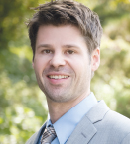
Thomas Paul Slavin, Jr, MD
Thomas Paul Slavin, Jr, MD, of City of Hope National Medical Center, where he is Assistant Clinical Professor in the Department of Medical Oncology, Division of Clinical Cancer Genomics, and a Program Member of Cancer Control and Population Sciences, commented on these substudy findings. The implications of having a reliable early detection test for cancer “would be enormous,” he said, especially considering the population is aging and therefore at increasing risk for cancer.
“As our population is growing older, identifying ways to combat age-related diseases such as cancer is imperative if we want to substantially increase human longevity,” Dr. Slavin stated. “Notwithstanding people at (1) average risk for cancer with no history of cancer, we have now also added (2) a large number of cancer survivors who were successfully treated but may remain at elevated risk for secondary malignancies due to treatment and (3) individuals identified at high risk for cancer due to advances in understanding germline mutations in DNA repair genes such as BRCA1. All three of these populations could benefit greatly from an early cancer detection test.”
Cautious Optimism
“Over the years, an infinite number of biomarkers have been evaluated for potential roles in cancer detection. Only a handful of them have made it to routine clinical practice,” pointed out Dr. Slavin.
However, he continued, this scenario may be changing with the emergence of circulating tumor DNA plasma screening. He calls it “the most promising early detection test to date.” Circulating tumor DNA plasma testing can leverage multiomic technologies, such as epigenetic methylation, copy number variation, exosome analysis, circulating RNA and microRNA, and protein markers, among other differentiating biomarkers and assay techniques, Dr. Slavin noted.
“Although this technology holds great promise, it still needs a substantial amount of research and development prior to integration into the massive U.S. health-care system, and there are many questions to be answered,” he cautioned. For instance, what types of studies are needed to show strong clinical utility? How long will it take for cancer and insurance guidelines to develop? Prior to guideline development, who ultimately is going to pay for this testing?
“Overall, even with these big questions,” Dr. Slavin concluded, “the conceivable benefits to humanity necessitate continuing efforts to better understand the ultimate potential of this technology.” ■
DISCLOSURE: Dr. Slavin reported no conflicts of interest.

